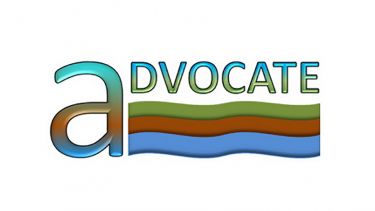Natalia Fernandez, a geologist from University of Oviedo (Spain), started to work on projects related to contaminant hydrogeology, karst geohazards and groundwater protection both at the Geological Surveys of the United Kingdom and Ireland after graduation. In 2009, she was awarded a fellowship from the Spanish Ministry of Science within the Operational Support Group at the International Continental Scientific Drilling Programme in Potsdam (Germany).
Natalia worked as Early-Stage Researcher in the Advocate Marie Curie Initial Training Network doing her PhD about “Integrated approach for contaminant fluxes assessment in the heterogeneous soil-groundwater continuum using geophysical, tracer and passive sampling techniques”
For her, the Marie Curie Programme provides excellent resources to acquire scientific and transferable skills through high-quality training courses from top European universities, research organizations and industries.
While becoming an expert in my research topic, I have the opportunity to broaden my scientific horizons through multidisciplinary and international cooperation from the network. In addition, life abroad has contributed to personal growth and to better understand other cultures. Overall, the Marie Curie Programme offers a unique opportunity for scientific and personal development
Natalia Fernandez
Project Research Fellow
Why did you choose to start a PhD? What did you learn from it?
One of the reasons why I wanted to start a PhD is my curiosity and willingness to learn new things. I wanted to work on a project where I could use my skills and develop additional ones to find a solution for a scientific problem; my main motivation was to achieve something significant that could help improve the environment.
I have learnt many lessons from my PhD. It has been the ideal opportunity to acquire new technical and scientific skills; the feeling of doing something good for the environment is quite fulfilling. It has also been rewarding from a personal perspective: I have discovered many things about myself and about my capabilities.
Natalia, your research is to explore the keys to obtain a detailed understanding of the characterization of pollutants at the site‐scale and their fate and transport in the soil‐groundwater. Could you describe it better and why is it important to do it?
Nowadays, it is difficult for end-users to estimate the impact of contamination in soil and groundwater. In particular, measuring contaminant fluxes has proven to be a challenge. Therefore, it is important to improve soil and groundwater characterization, as it is essential to improve risk assessment and evaluate remediation options. In this project, we are trying to overcome such difficulties by applying onsite techniques in the vadose zone which will allow us to better understand the movement of contaminants through the soil and their mixing with groundwater.
Consequently, as we know, you are developing an efficient and robust procedure for assessing pollutant transport from the pollution site to the groundwater body at field scale since June in Belgium. Which were the keys for choosing this experimental method? What difficulties did you encounter during the process of implementation?
During the first year of the project, I carried out an extensive survey of available techniques for flux contaminant measurement in the vadose zone at a field scale. It was difficult to find a methodology that could overcome the difficulties of installation at an industrial contaminated site, as most technologies have been developed for agricultural purposes. I chose the combination of the Vadose Zone Monitoring System (VMS) and cross-hole geophysics because I think that they overcome such difficulties.
The implementation was a challenge. The installation of the experiment required international coordination and logistics; in addition, working at a contaminated site is complicated. The installation was carried out successfully, thanks in part to hard work and to an amazing group of people who have been extremely supportive. I feel grateful for such support.
Which kind of pollutants are you analysing and what are the consequences for human health?
The site is polluted with cyanide, BTEX, PAH and heavy metals. All of them have negative consequences for human health; some pollutants produce negative effects after a certain time of exposure. But other contaminants such as some cyanide species, the mortal effect could be immediate.
What results do you expect?
Cross-hole geophysics will be used to obtain 3D images of the vadose zone. Image interpretations will be calibrated with information obtained from the VMS. From these results, it will be possible to better understand water and contaminant distribution in the unsaturated zone.
What would be the next step?
The next step consists of monitoring the site under natural recharge conditions prior to artificial infiltration tests. Soil water sampling and geophysical measurements are necessary in order to complete the information provided by water content sensors installed in the VMS.
About your future, where would you like to develop your professional career? Where will you see yourself?
I see myself developing my career in environmental issues. I wish to complete my knowledge by acquiring additional experience in environmental protection and policy. In the future, I would like to develop my skills in science communication and public engagement. I see myself working in an international environment, as I find that it provides an excellent opportunity for professional and personal development.
Finally, if you had to describe yourself in a phrase, what would it be?
I am an enthusiastic, communicative learner who is motivated to find environmental solutions through creative thinking and international cooperation.

